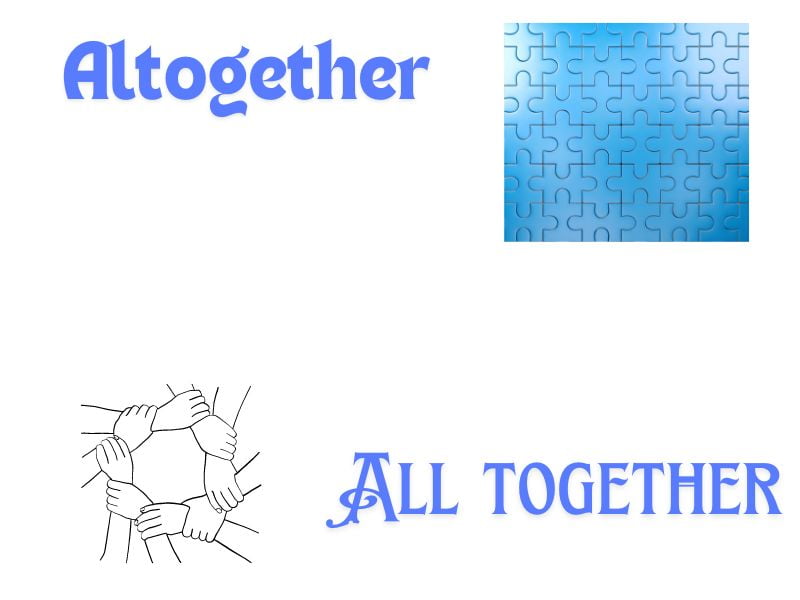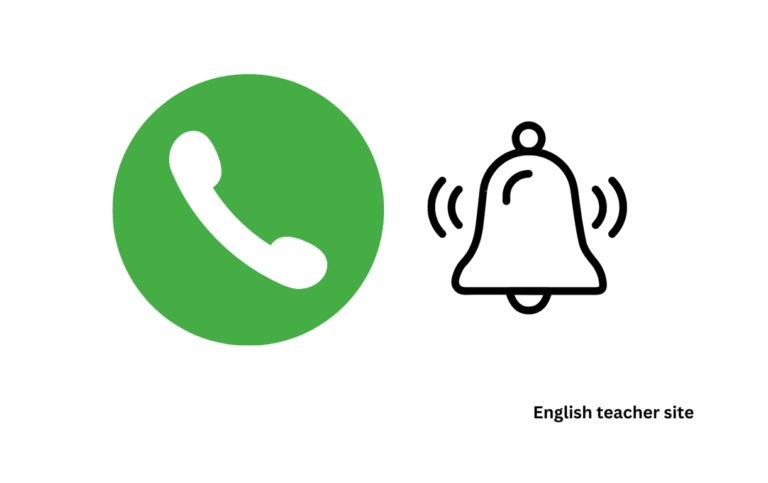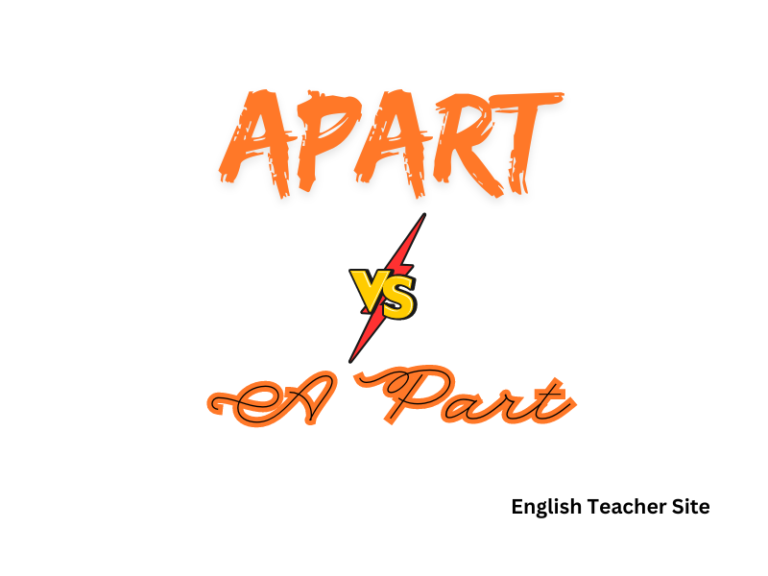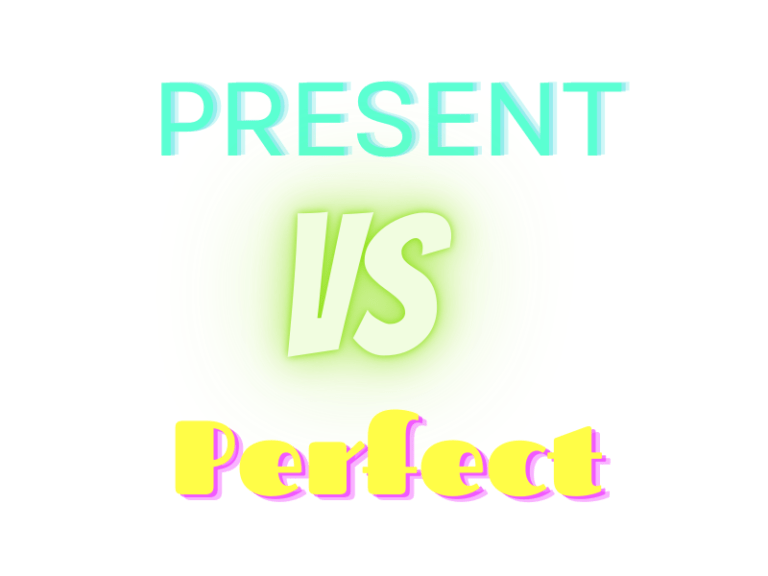Altogether vs All Together: Which is Correct? How to Use Both Plus Examples

“Altogether” is an adverb that means “completely” or “entirely.” It can be used to describe a situation or action that is done in full. For example, “She was altogether successful in her endeavors.
” On the other hand, “all together” is a phrase that means “everyone or everything in a group.” For instance, “They gathered all the students together for a group photo.”
Confusing the two phrases can lead to misunderstandings and miscommunications.
In this article, we’ll explore the differences between “altogether” and “all together,” provide examples of how to use them correctly, and offer tips for avoiding common mistakes.
Understanding ‘Altogether’ and ‘All Together’
In this section, we will explore the differences between “altogether” and “all together” and provide examples of how to use them correctly.
Altogether
“Altogether” is an adverb that means “completely,” “entirely,” or “wholly.” It is used to describe a complete or total amount of something. For example:
- She was altogether too excited about the party.
- The company decided to close the office altogether.
“Altogether” can also mean “considering everything” or “on the whole.” For example:
- Altogether, it was a great trip despite the bad weather.
- The team’s performance was not good altogether.
All Together
“All together” is a phrase that refers to a group of people or things. It means “in a group” or “at the same time.” For example:
- Let’s sing “Happy Birthday” all together.
- The children played all together in the park.
“All together” is never used as an adverb, unlike “altogether.” It is used to describe a collective noun, like “family,” “team,” or “group.” For example:
- The whole family was there all together for the holiday.
- The team stood all together for the photo.
Examples
Here are some examples to help differentiate between “altogether” and “all together”:
Incorrect: She decided to quit the job all together.
-
Correct: She decided to quit the job altogether.
Incorrect: Let’s all together go to the mall.
Correct: Let’s all go to the mall together.
Incorrect: He was all together too busy to attend the meeting.
Correct: He was altogether too busy to attend the meeting.
Incorrect: The team decided to cancel the game altogether.
Correct: The team decided to cancel the game all together.
Correct Usage of ‘Altogether’
Altogether is an adverb that means “completely,” “totally,” or “entirely.” It is used to refer to the entirety of something. For example, “He stopped going to the gym altogether” means he stopped going to the gym completely.
Here are some examples of correct usage of “altogether”:
- “I am not altogether sure if I can make it to the party tonight.” Here, “altogether” is used to mean “completely” or “entirely.”
- “He decided to quit his job altogether.” In this sentence, “altogether” is used to mean “completely” or “entirely.”
- “The company’s profits were down altogether this quarter.” Here, “altogether” is used to mean “in total” or “completely.”
It is important to note that “altogether” is often confused with “all together,” which means “everyone together” or “everything together.” For example, “We all sang happy birthday all together.”
The following table summarizes the correct usage of “altogether”:
| Correct Usage | Examples |
|---|---|
| Meaning “completely,” “totally,” or “entirely” | “He stopped going to the gym altogether.” |
| Meaning “in total” or “completely” | “The company’s profits were down altogether this quarter.” |
In summary, “altogether” is used to refer to the entirety of something and means “completely,” “totally,” or “entirely.” It is important to be aware of the difference between “altogether” and “all together” to avoid confusion.
Correct Usage of “All Together”
When using “all together,” it refers to a group of people or things that are gathered in one place or at one time. It is used to describe a situation where everyone or everything is in the same location or doing the same thing. For example, “The family was all together for the holidays.”
Here are some additional examples of “all together” in use:
- The band played all together during the concert.
- The children sat all together in the front row of the classroom.
- The team worked all together to complete the project.
To help clarify the usage of “all together,” the following table provides some examples of correct and incorrect usage:
| Correct Usage | Incorrect Usage |
|---|---|
| The family was all together for dinner. | The family was altogether for dinner. |
| The students worked all together on the group project. | The students worked altogether on the group project. |
| The team was all together for the championship game. | The team was altogether for the championship game. |
It is important to note that “all together” is always used as a phrase and never as a single word. Also, it is never used to describe a complete or total amount.
In summary, “all together” is used to describe a group of people or things that are gathered in one place or at one time. It is always used as a phrase and never as a single word. By following these rules, one can use “all together” correctly in their writing and speech.
Comparing ‘Altogether’ and ‘All Together’
Altogether and all together are two phrases that are often confused with each other. They may sound similar, but they have different meanings and uses.
Altogether
Altogether is an adverb that means “completely” or “entirely.” It is used to describe a situation where something is considered as a whole. For example:
- The team decided to altogether abandon the project.
- She was altogether unhappy with her job.
All Together
All together, on the other hand, is a phrase that means “in a group” or “at the same time.” It is used to describe a situation where people or things are gathered together. For example:
- The children sang all together in the choir.
- The books were all together on the shelf.
To help differentiate between the two phrases, the following table provides a quick comparison:
| Phrase | Meaning | Usage |
|---|---|---|
| Altogether | Completely or entirely | Describing a situation as a whole |
| All together | In a group or at the same time | Describing a gathering of people or things |
It is important to note that altogether is always an adverb, while all together is never used as an adverb. Instead, it is used in all other senses.
Here are a few more examples to help clarify the difference:
- The team decided to abandon the project altogether. (Completely)
- The team decided to abandon the project all together. (In a group)
- The family was altogether happy with their new home. (Completely)
- The family was all together in the living room. (In a group)
In summary, altogether and all together are two phrases that sound similar but have different meanings and uses. By understanding the difference, one can use each phrase appropriately and avoid confusion.
Examples of ‘Altogether’ in Sentences
Altogether is an adverb used to mean “completely,” “wholly,” or “entirely.” It is often used to describe the sum total of something or the overall effect of a situation. Here are some examples of how to use ‘altogether’ in sentences:
- She found the movie to be altogether unsatisfying.
- The team was altogether unprepared for the big game.
- The new policy was altogether unnecessary and caused more harm than good.
- The concert was altogether amazing, and the audience couldn’t stop cheering.
- The book was altogether too long and could have been edited down to half its length.
Tips to Remember the Difference
Altogether and all together are easily confused words, but they have distinct meanings. Here are some tips to help you remember the difference between the two:
Altogether is an adverb that means “completely” or “entirely.” For example, “She gave up altogether on the project.”
All together is a phrase that refers to a group of people or things. For example, “The family ate dinner all together at the table.”
One way to remember the difference is to think of “altogether” as “all in one” or “all at once.” This can help you remember that “all together” refers to a group of things or people, while “altogether” refers to something that is complete or total.
Another way to remember the difference is to look at the words themselves. “Altogether” has the word “all” in it, which can help you remember that it refers to something that is complete or total. “All together” has the word “together” in it, which can help you remember that it refers to a group of things or people.
Here is a table summarizing the differences between “altogether” and “all together”:
| Altogether | All Together | |
|---|---|---|
| Part of speech | Adverb | Phrase |
| Meaning | Completely or entirely | Refers to a group of people or things |
| Example | She gave up altogether on the project. | The family ate dinner all together at the table. |
To further help you remember the difference, here are some additional examples:
- “He was altogether too excited about the news.”
- “Let’s put all the toys together in the toy box.”
- “The band was playing music all together.”
- “Altogether, the project took six months to complete.”
By keeping these tips in mind and practicing using “altogether” and “all together” correctly, you can avoid confusing these two words in your writing and speaking.
Conclusion
Altogether is a powerful word that can be used to express a strong opinion or describe the complete nature of something. When used correctly, it can add emphasis and clarity to your writing.
My name is Khamis Maiouf. I am the creator of the English Teacher Site, dedicated to providing valuable resources and insights for students around the world. With a passion for education and a commitment to helping students enhance their skills, I aim to make English teaching more effective and enjoyable for both educators and students.






